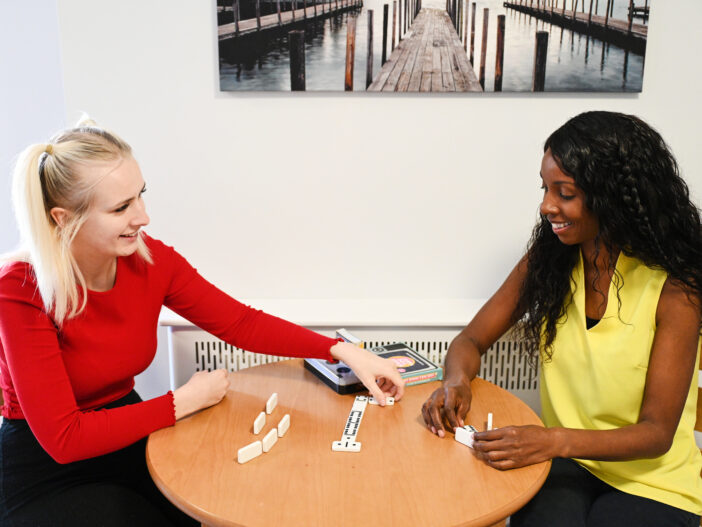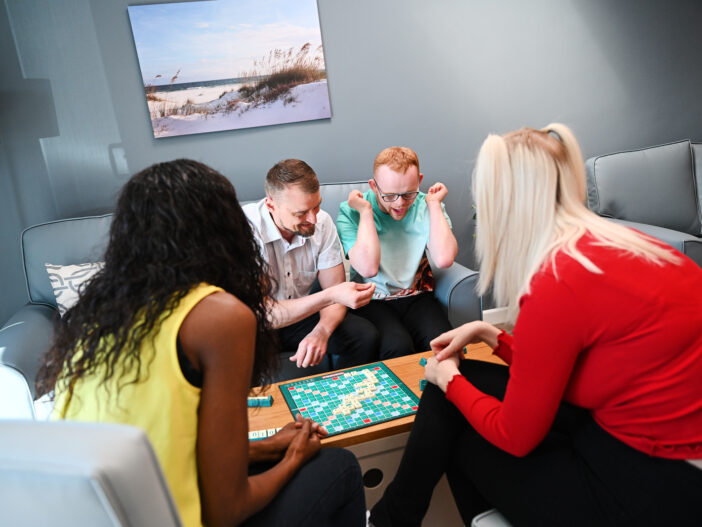Transitioning into supported living from a residential care home
Some of the people we support reach a point in their journey where being in supported living over residential care homes is more beneficial for them in leading a happy and fulfilling life.
When this decision is made, there is a lot of planning and preparation to ensure a successful transition. This week, we spoke with Occupancy Manager, Jen Magill, to find out her top tips when preparing for a such a move…
The right move for the right reasons
The first step is to ensure the right move happens for the right reasons. This includes an initial discussion to find out why the individual wants to move and where to.
For example, if a person would like to be more social and increase their learning opportunities, it doesn’t make sense for them to live alone, in the middle of the countryside with no social activities or colleges around! Instead, even if it takes a bit longer, it is worth waiting until the right property in the middle of a town with a good college nearby becomes available.
We have this detailed conversation at the beginning of the process, so everybody is clear on why the transition is happening and what home looks like for the individual. Then, throughout the process, we refer back to this why to make sure that it’s still right for them.
Managing expectations
In an ideal world, everybody should live in a place that ticks every single one of their wants and needs… but sometimes, compromise is needed. You might want a huge garden but settle for a patio if the rest of the offering is perfect. It’s all about being honest and upfront with what is achievable so you can manage expectations.
As part of the transition process, we always discuss their needs and must-haves first, and then the nice to haves after. It’s the same as when anybody is house hunting! This can be tricky, but it’s so important. We never want to promise somebody something that isn’t possible as it will only lead to disappointment.
Plan, plan and plan again!
It seems obvious that you’d need to plan for a move, but for the people we support, it can be such a life changing event, so it’s imperative we get it right from the outset.
We consider every element of the independent living skills needed to move into a supported living property. We also look at potential barriers they might need to overcome. For example, signing a tenancy can be overwhelming for an individual initially, so sometimes someone else may hold the tenancy for them.
For someone who has lived in a residential care home, we work together with them to create a plan that helps to develop their skills gradually. This plan may begin in the residential care home and continue with them into their supported living home. This includes teaching them about managing budgets, paying household bills and how to do the shopping and cleaning, and providing support where required
As part of this, we support them to secure the correct benefits and income for their personal circumstances, as it is usually slightly different from living in a residential care home. This needs to be proactive and done in advance, because this change can take up to 18 weeks, and we don’t want anybody to move into their own home without enough money to pay their bills!
Supporting before, during, and after transition
The active support we provide will change before, during and after the transition process, but we are there at every step to provide support no matter what.
For example, before transition, an individual may need additional support as we action their upskilling ahead of the move. This could be implementing a six-month plan to ensure they feel ready. Then during the transition, the plan will progress to include helping the person get familiar with their new location and using public transport. Typically, we start by joining them on the transport routes, then scaling back to just accompanying for part of the journey before they complete the journey alone with confidence.
Each transition is unique to the person, so our support is too. Some need additional support when they have moved, which can be similar to the support they received when they were living in their residential home. For others, we provide a phased approach, where support is gradually reduced as they become more settled and independent.
Find out more
For those that are ready, moving into supported living is a really positive step. Understandably, it can be unnerving initially, but we’re there for them at every step before, during, and after the transition.
To find out more about supported living, please visit our supported living webpages.

 Views
Views 

